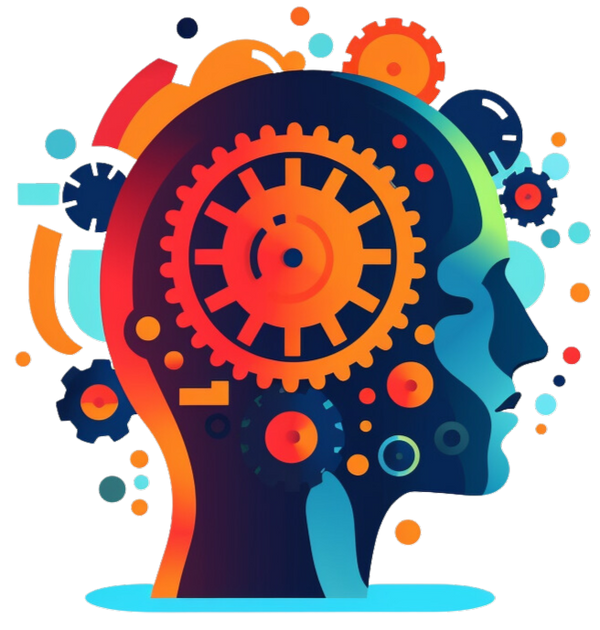
Valentine's Day for ADHD sufferers: 3 ways to more self-love
Share
Valentine's Day isn't just for couples. Those with ADHD can especially practice self-love on this day. Learn how peer therapy, body-oriented, and systemic approaches can help.
People with ADHD often struggle with self-doubt, excessive demands, and a harsh inner voice. Negative past experiences, high sensitivity, and a critical environment exacerbate this insecurity . This makes self-love all the more important. It is essential for stable self-esteem, emotional balance, and the love we are able to give to others.
Valentine's Day offers a good opportunity to consciously focus on one's own self. Instead of focusing on external love, self-love is about giving ourselves the appreciation we deserve.
Various therapeutic approaches help in this direction. Three of them are presented here: peer therapy, body-oriented therapy, and systemic therapy .

Peer therapy: self-love through connection and understanding
Many people with ADHD often feel misunderstood – because they "tick differently" than the people around them. This often leads to social withdrawal or self-doubt. This is precisely where peer therapy/ peer counseling comes in: exchanging ideas with like-minded people creates a relaxed understanding, strengthens self-confidence, and reduces feelings of isolation.
WHAT is peer therapy?
- A therapeutic approach in which people with similar challenges support each other
- Takes place in self-help groups, with a peer counselor, in online forums or moderated groups
- The aim is to share experiences, encourage each other and relieve

HOW does peer therapy work?
- People with ADHD meet regularly in pairs/groups, online or offline, and exchange ideas about their life issues/challenges
- Through conversations, shared strategies and tips they learn from each other
- The groups are often moderated, but can also consist of free meetings
WHAT IS PEE THERAPEUTIC?
- It strengthens the feeling of not being alone and of being understood, including ADHD
- Promotes self-acceptance by addressing typical ADHD problems
- Supports the development of new coping strategies and promotes self-confidence
Many affected individuals report that it's incredibly relieving to finally be understood . In a peer group, no one has to explain themselves—this promotes self-love because you no longer feel "wrong."

Body-oriented therapy: Feeling your own body as an ally
ADHD can affect not only the mind but also the body. Restlessness, inner tension, or an overload of stimuli are common symptoms. Body-oriented therapies help regulate the nervous system and establish a sustained, mindful connection with one's body.
WHAT is body-oriented therapy?
- An approach that consciously involves the body in the healing process
- Uses movement, breathing techniques and awareness exercises to promote emotional self-regulation
- The methods include yoga, dance therapy, somatic experiencing or neurofeedback
HOW does body-oriented therapy work?
- Regular exercise sessions such as yoga help to reduce excess energy and feel your own center
- Somatic Experiencing works with body sensations to break stress patterns
- Neurofeedback trains brainwave activity and thus improves self-control
WHAT IS BODY-ORIENTED THERAPEUTIC USE?
- Helps to improve body awareness and reduce stress reactions
- Promotes a gentler and more benevolent attitude towards oneself
- Reduces tension and improves the ability to cope with sensory overload
A relaxed body sends signals to the brain that safety and calm are possible —an important step toward more self-love. Those who see their bodies as ally can also become more mentally stable and balanced.

Systemic therapy: Recognizing and letting go of old patterns
ADHD is often associated with deeply rooted negative beliefs. Many affected individuals were perceived as "too loud," "too chaotic," or "too sensitive" during childhood. These experiences often shape their self-image well into adulthood. Systemic therapy or systemic support helps individuals break free from these patterns and approach themselves with more compassion.
WHAT is systemic therapy?
- A form of therapy that considers people in their social relationships
- Examines how family, partnership and environment influence self-image
- The focus is on consciously recognizing and breaking old patterns
HOW does systemic therapy work?
- Through conversations with a therapist, formative relationship patterns are uncovered
- Methods such as genograms or family constellations help to identify inherent dynamics
- Negative beliefs are made conscious and replaced by new, constructive counterparts
WHAT IS SYSTEMIC THERAPEUTIC USE?
- It helps you to free yourself from outdated expectations and influences
- Promotes self-love by relieving/dissolving old self-doubts
- Helps to better understand yourself and your needs
Many people with ADHD struggle with a harsh inner critic, born of past experiences. Systemic therapy makes it possible to disarm and tame this critic — and to treat themselves with more love.

Conclusion: Small, specific steps towards self-love
Self-love is a lifelong journey, not a short-term goal. The presented therapeutic approaches offer different but effective ways to improve self-acceptance, which is often lacking in ADHD:
✔ Peer therapy provides understanding and a strong sense of belonging
✔ Body-oriented therapy helps you get closer to yourself through movement and perception
✔ Systemic therapy dissolves old beliefs and strengthens a positive self-image
Each of these paths can be a first step. Ask yourself: What could I do today to get closer to myself? Even a small, conscious decision can be the beginning of a much more loving relationship with yourself.
Those who accept themselves create the basis for inner peace and emotional stability – and strengthen their own ability to love.
